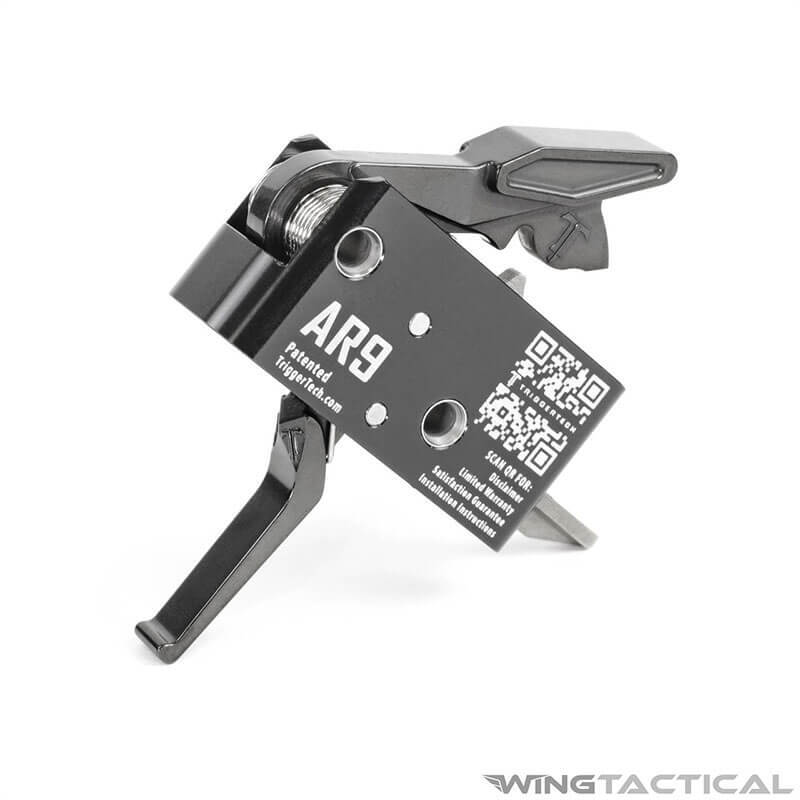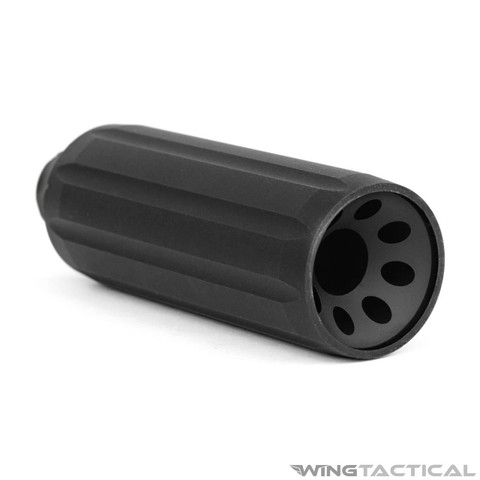The AR-15 is incredibly popular among collectors and competitors because it’s accurate, lightweight, versatile, and simple to maintain and disassemble. That simplicity makes it easy for owners to replace and upgrade parts for longevity and customization.
At Wing Tactical, we have all the parts and accessories you need to replace old parts or to upgrade your AR-15, whether you’re trying to extend the life of your current rifle or trying to make it fit your unique needs. We also offer AR-15 lower receiver kits if you’re starting from scratch with a stripped lower.

AR-15 Lower Receiver Parts And Kits for Today’s Gunsmiths
As you source AR-15 lower receiver parts, you can search Wing Tactical for each part you need. If you have brand preferences, you can go to our brands page to find your manufacturer of choice. We carry lower receiver parts from top-rated brands like 2A Armament, Magpul, Phase 5, and more.
It’s important to think about what type of lower receiver you want to build from. There are three types: cast aluminum, billet aluminum, and forged aluminum lower receivers.
We have all the AR-15 lower receiver parts you’ll need for sale in our catalog, and you can start assembling your AR-15 lower receiver as you start receiving the parts in the mail.

Quick Guide to Assembling Lower Receiver Parts
- Separate the parts of your AR-15 lower receiver kit into their groupings. If you purchased each group or part separately, it’s a good idea to keep them in the bags they’re shipped in until you’re ready to assemble your lower. That way, you can keep all the small pieces and springs together.
- With your AR-15 lower receiver parts, assemble the trigger group, ensuring that the springs are aligned correctly. After you put the trigger and disconnector together—along with the appropriate springs—you can drop the trigger into place and tap the trigger pin into place.
- Next, put the hammer and spring into place. The hammer pin may be more difficult to tap into place because of the tension in the springs. You may need to use a punch and a hammer to tap it in.
- Install the trigger guard—this can be tricky. Just make sure you have it in place before you start to install the roll pin. You can use plastic or some tape to protect the finish of your AR-15 lower receiver parts.
- Install the magazine catch. The post is threaded, so push it through to the button side. Then push the button in deep enough to rotate the other end to screw in the catch.
- Use a special punch or pliers of your AR-15 lower receiver kit to install the bolt catch. Put the plunger and spring in place, and then install the catch and the roll pin.
- As you install the safety selector, you’ll also need to install the grip. Push the hammer down to lock it in place, and then insert the safety selector in the “fire” position. Slide the safety selector detent into place in the hole beneath the lever and place the detent spring into place on the pistol grip. Then use the screw and washer to install the grip, which secures the safety selector detent of your AR-15 lower receiver parts.
- Place the buffer detent and spring into place, and then hold it down with your fingertip as you screw the buffer tube into place. The lip of the tube should go in far enough to hold the rear edge of the detent in place.
- Place the rear takedown pin. Slide the post in so the slot is to the rear. Then, insert the detent and spring into the hole in the back of the receiver.
- If you use a standard butt stock, you’ll need a spacer for the end of the buffer tube. The butt stock is one of the AR-15 lower receiver parts that will hold the spring and detent in place. If you have a collapsible butt stock, you may need to install a spacer between the buttstock and the receiver to hold the detent and spring in place for the rear takedown pin. Use the butt stock screw in your AR-15 lower receiver kit to secure the stock.
- The front takedown pin can be one of the tricker AR-15 lower receiver parts to install. If you don’t hold the detent in place well enough while you’re installing the pin, the spring can send the detent flying. Be careful, and do this in a clear area, just in case you need to search for that detent. Put the spring and detent in place, and hold it down with a razor blade or thin piece of plastic or aluminum.
- Once the front takedown pin detent is in place, slide the pin into place with the slot over the detent. Then, pull away the plastic or metal that you’re using to hold the detent in place. Now, to finish assembling your AR-15 lower receiver parts, all you have to do is slide the buffer and spring into the buffer tube. The detent will hold it in.
Your AR-15 lower receiver kit is now complete and ready to be attached to your upper.

AR-15 Lower Receiver Kits
Shopping for AR-15 lower receiver parts can be a simple process. If you’re building an AR-15, you may opt for a complete lower receiver parts kit. This will give you everything you need to build a functioning lower receiver, and all you will need to complete your rifle is a buffer and spring assembly, an upper receiver assembly, and a buttstock, along with any additional accessories like optics or foregrips.

AR-15 Lower Receiver Parts
Shopping for AR-15 lower receiver parts can be a simple process. If you’re upgrading your rifle, replacing worn parts, or customizing your configuration, all you have to do is browse our collection to find everything you’ll need to bring your vision to life, including
- Trigger assembly and guard
- Magazine catch and release button
- Bolt catch
- Safety selector switch
- Grip and foregrip
- Takedown and pivot pins
- Buffer assembly (or receiver extension)
- Butt stock
Wing Tactical: Simplifying AR-15 Parts Sourcing Since 2013
Wing Tactical has the AR-15 lower receiver parts and anything else you need for your AR-15. From standard parts for a basic build to enhanced parts for custom competition rifles, we carry everything you’ll need and more. We want to provide you with exceptional customer service and the highest quality parts — that’s why we offer same-day shipping on all orders placed before 1 pm EST and 30-day hassle-free returns.
You’re in the right place to shop for lower receiver kits for your AR-15. As always, ensure you order parts that meet the limitations of your state’s gun laws.
Want to learn more about lower receiver parts for your AR-15? Contact us for expert building tips.
Frequently Asked Questions
Which components are in an AR lower receiver?
An AR-15 lower receiver has four main components:
- The trigger group
- The buffer system
- The stock
- The firing control group
Each of these groups features its own array of individual parts: for instance, the buffer system contains a buffer, buffer spring, buffer tube, and hardware.
Should you purchase individual lower parts or a kit?
Builders looking for more customization control might prefer to source each AR-15 lower receiver part individually. When you purchase individual parts, you can choose specific components tailor-made for your build and optimization goals.
However, sourcing individual products takes time. First-time builders or gunsmiths tight on time might prefer to use a lower receiver kit featuring multiple compatible components.
Is it easy to build an AR lower?
For most builders, assembling an AR-15 lower receiver from parts is simple enough. The building process won’t require specialized tools or gunsmithing experience. Many builders report that the most difficult part of building an AR-15 lower receiver with parts is keeping track of all the small components — make sure your workbench is clear during the build process and put parts in bins or bags for storage to keep track of them during assembly.
What is a stripped lower?
A stripped lower receiver is the foundation of the rest of your AR-15 lower receiver assembly. Perhaps most importantly, it’s marked with a serial number — a unique number that can help identify your rifle.
Stripped lowers are currently available for purchase from licensed FFL dealers.






